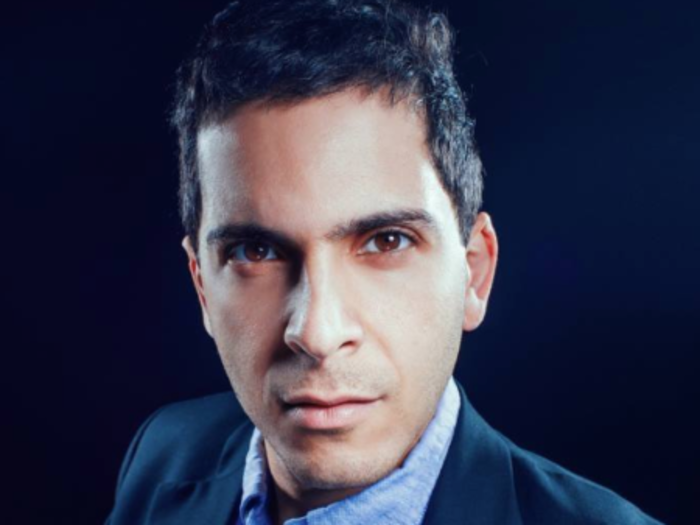- Home
- slideshows
- miscellaneous
- When I was 16, I failed big-time at running my first company. Here are 7 hard lessons I learned that every young entrepreneur can benefit from.
When I was 16, I failed big-time at running my first company. Here are 7 hard lessons I learned that every young entrepreneur can benefit from.
1. Business success is a function of skillset, passion, and grit

2. Being technical gives you a huge leg up

When I was 16, I knew how to code, but honestly, I had no idea why I'd ever need to in starting a publication. There were far too many Wordpress templates out there, and plus, it's not like I was starting a tech company ...
But I couldn't be more wrong. These days, every company is a "tech company." I quickly realized that knowing HTML and CSS (and later picking up PHP) allowed me to fix features on-demand instead of hiring developers externally.
Mahbod Maghadam, a cofounder of the popular song annotation site, Genius, and Everipedia, a blockchain-based digital encyclopedia, knows this well. He told me, "Building a startup where the CEO is not technical is a recipe for disaster; both Everipedia and Genius are led by my nerd-genius friends, Sam and Tom. That is how you build a unicorn — there is no other way."
Being technical continues to be an advantage today. The idea is that the founding team should understand product on a deep level, enough to communicate effectively with users and investors, and also fix issues themselves as they arise. And engineers are expensive to hire, so if you know how to code, you'll often save a lot of capital critical to early-stage growth.
3. You should have difficult conversations early on

At 16, I never had a manager before, so it was hard to model what that would look like for managing my team. At YBC, I managed a staff of 20 writers, and when I was unsatisfied with articles, I would often bury my concerns and compensate by spending more time editing them. When I disagreed with my cofounder on scaling or content strategy, I often preferred to avoid conflict. Consequently, problems weren't fixed quickly and tensions quickly rose.
To reinforce this idea, I chatted with Danielle Strachman, General Partner at the 1517 Fund and cofounder of the Thiel Fellowship. She works with and funds young founders all the time, and, from what she's seen, she tells me, "I've seen cofounders split over not communicating enough and focusing on the same goals. It's really sad to see a team that starts out as friends turn against each other, but it happens."
Though I'm still friends with my former cofounder to this day, the time sink associated with not communicating and the hurdles we could have avoided are testament to the importance of addressing concerns early on. Whether it be a misalignment of values, a difference in priorities, or difficulty fundraising, these conversations are never fun to have. But putting them off doesn't do anyone any favors either.
Read more: 6 confidence hacks that helped me go from earning $75,000 to $500,000 a year
4. It's not so bad to be a solo founder

Starting my first company, I didn't want to do it alone. At the time, it sounded fun to work with one of my friends, so we went in 50-50. We had a lot of fun building the company and learning on the job, but it wasn't without disagreements. Really, it's not so bad to be a solo founder. You can often move faster if you know what you're doing.
To get some practical insight, I chatted with Lisa Wang, who recently sold her company, SheWorx, to Republic. She told me, "When you are starting a company there's a lot of pressure to bring in a cofounder right away. But what I've learned is that oftentimes when you as an individual have not yet clarified your own values and vision for what you want to build, bringing on a cofounder prematurely can add more chaos rather than clarity."
I almost made this mistake again when I started The Rising, my second publication. I knew what I needed to do to get it off the ground, but thought it would be easier if I had a cofounder help with editorial work. But what I really needed was grit to take on a heavier workload, not a 50-50 partner.
5. Sometimes, a smaller team is better

Once YBC started to gain some readership, I knew that the next step was to increase content output. With some effort, I managed to convince 20 other high school students to join us as writers. It was awesome — it felt like we were at the cusp of running an actual publication that publishes several articles a day.
But as you can imagine, a high school student just doesn't have the time to balance school with the editorial load that comes with managing 20 writers. My cofounder and I quickly burnt out. With so many articles to edit, we couldn't do quality assurance. Having a sizable content team was both our biggest strength and our Achilles heel.
Sahil Lavingia, the first designer at Pinterest and Founder of Gumroad, shared a similar sentiment. He said, "Hiring is so hard that when you can hire someone, you do, but hiring is expensive, and it can put your company in a place where you're making decisions to justify someone's salary while reducing your runway."
Whether it's because you're cash-strapped or because you need a smaller team for quality assurance, sometimes a smaller team is better.
6. Be careful with resource allocation

At YBC one of my biggest mistakes was misallocating time. While growing the publication, I thought it might be cool to also build an online community for young entrepreneurs to chat as a spin off of our publication. Building it distracted me from what mattered, which was growing readership. Aside from mismanaging time, young entrepreneurs often also mismanage capital.
Christina Qi, cofounder of Domeyard, a hedge fund that trades billions of dollars a day, made this mistake personally. She told me, "We chose the largest service providers — the biggest law firms, accountants, brokers, etc. But it turns out bigger isn't always better. We ended up paying up to five times more than if we had gone with smaller providers."
In the earliest stages of growth, there's almost always a scarcity mindset, whether it be because you have no funding or a small team and a huge problem to tackle. So, if something isn't tied to your key performance indicators, there's really no reason to burn time or money on it.
7. Listen to the data and then experiment

Though there's often more to it than the numbers, data often provides an objective view of how your business is doing. That's why you should listen to the data. At YBC, I was checking Google Analytics to know how many visitors we had, but I didn't dive deeper to learn who our users really were. That put a huge dampener on our growth.
This was a particularly important principle for Joshua Browder, the Founder of DoNotPay. He shares from personal experience: "For example, the typical wisdom is that if you charge for your product, consumers will use it less. However, I have learned by experimenting that it can actually sometimes increase engagement." The data gave Joshua an idea of how engaged his users were, but if he hadn't experimented with a new revenue model, he would have never known it would (counterintuitively) boost engagement.
From learning more about your user demographics to how often they use your app or product, the numbers can tell you a lot. But don't just take it at face value. With the data, you've got grounds to take calculated risks. So take them.
Popular Right Now
Popular Keywords
Advertisement